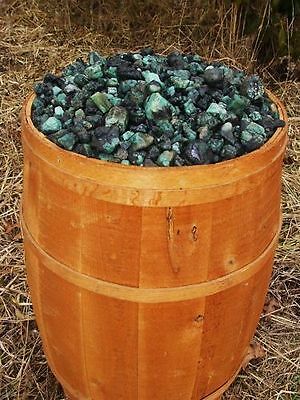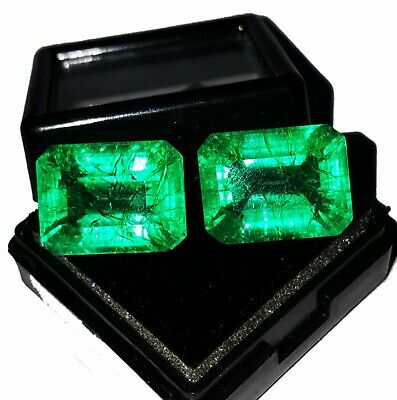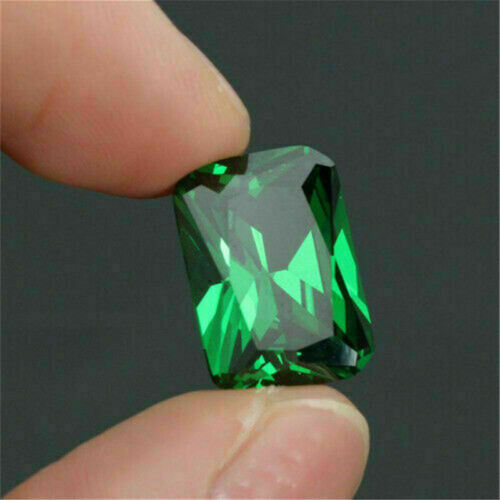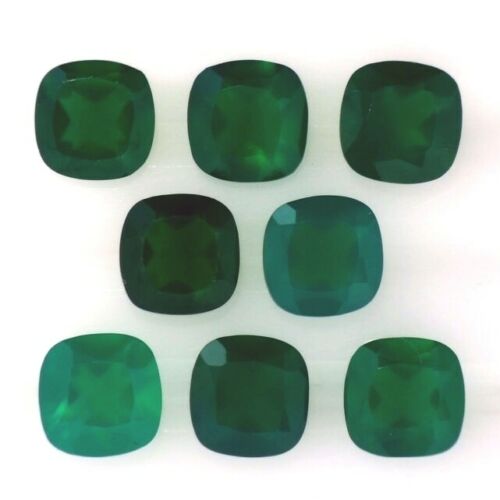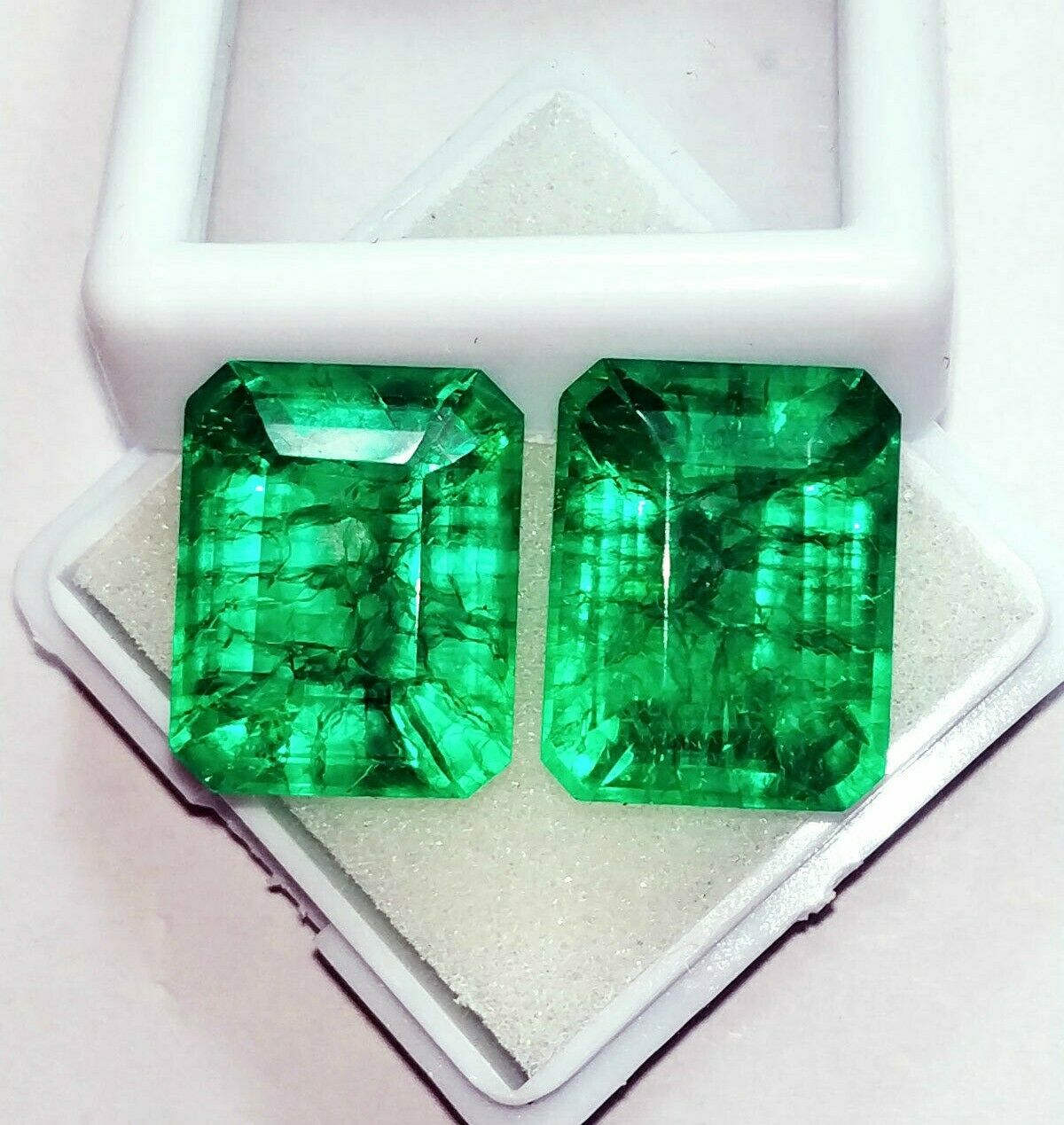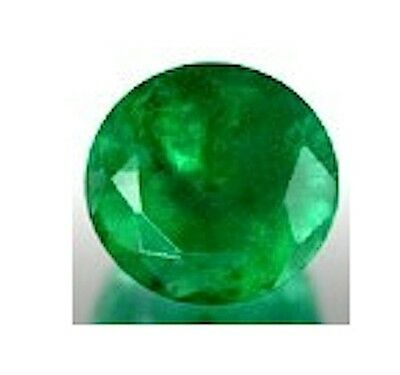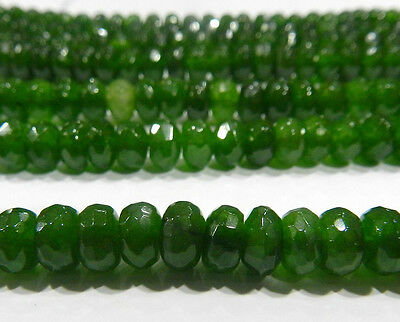-40%
2.40 cts HKD-Certified Natural Oval-cut Green VS Transparent Emerald (Colombia)
$ 237.6
- Description
- Size Guide
Description
2.40 cts HKD-Certified Natural Oval-cut Green VVS Transparent Emerald (Colombia)New without Tags. This gem has never been used/placed/set in a setting.
It is utterly undamaged, unmarred and in perfect condition as expected of NWOTags.
I have included an Emerald article below for your appreciation and enjoyment.
Summary of below:
"Emeralds have a vitreous (glass-like) luster when cut and polished. Although their clarity can occur from translucent to opaque, transparent specimens are most desirable and are much more valuable. Clarity is important, but inclusions are tolerated more in emeralds than virtually any other gem. Unlike other beryl gems, emeralds often contain inclusions and other flaws. These flaws are not looked upon as negative attributes for emeralds, as they would be for other gemstones. Indeed, these flaws are considered part of the character of the stone and are used to assure the purchaser of a natural stone.
Emerald clarity is graded by eye, unlike diamond, where 10x loupe magnification is used to grade clarity. If an emerald has no inclusions that are visible to the naked eye, it is considered flawless. "Eye-clean" stones will command the highest prices, especially those with ideal color grade."
Type: Natural Earth-mined Emerald
(This HKD-Certified Natural Emerald is sealed&shipped in its HKD certification document (see photos)) -- gemgym
Color: Emerald Green
Shape: Oval-cut
Dimensions: 9.90mm x 8.05mm x 4.25mm
Weight: 2.40 cts
Luster: Excellent
Clarity: VS-transparent
Hardness: 9.0 rating on the Mohs Scale
Treatment: Not Enhanced, Not Heated
Origin: Colombia
Emerald Queen - My Molly Malone,
They say you're just a Stone.
But if so, Why do I feel you?
Why do I hear you?
How Comforting your Presence.
How Close when we Whisper.
Is My Need that you're There?
Or Your Need that I am Here?
Whichever Be, We have One Another.
Whatever Be, We are One Another.
Take you They will,
No Matter If They Do.
They Want What We Are.
So Go Yet We Remain.
Go Share What We Are.
Whatever Be We Remain.
Author's Note -- Concerned reader, the above was inspired by my study of Schizophrenia and a Touch of Literary Liberty; fortunately, I am not so Afflicted. I am just having fun writing for an incidental audience -- you. :-)
We are an eBay eStore enterprise focused on selling mostly Loose Natural Gemstones. Stay here, look around and learn. Via eBay Messaging, ask us questions, make an offer, and otherwise discuss your wishes, concerns and hopes. We pride ourselves as good-spirited folks having fun and doing our best to share the joy of Nature's most beautiful and enduring literal treasure -- Natural Gemstones. Expect to find us cheerful and trustworthy, and we will expect the same of you. For us, Negative FeedBack as a means of coercion is never needed and only degrades everyone's enjoyment in what should otherwise be a fun shopping experience. And finally, please enjoy my work as eBay's First (unofficial) Gemstone Poet. -- gemgym
=========================================================
Emerald Gemstone Information
About Emerald - History and Introduction
Emerald is the most precious stone in the
beryl group
. The name comes from the old French word 'esmeralde', which was derived from the Greek word 'smaragdos' meaning 'green stone'. By definition, emerald is any medium to dark green beryl colored by chromium. Green beryl colored only by vanadium is not considered to be true emerald, but rather as simply green beryl. Since the 1960s, the American jewelry industry changed the definition to include vanadium colored beryl as 'emerald', but in the UK and Europe, they are still not recognized as such. The historical green color of emerald is unparalleled in the world of gemstones and it is considered as one of the most 'precious four' of all gemstones, which also includes sapphire, ruby and diamond. Although emeralds are one of the most valuable gemstones available today, most are very heavily included, rendering their resistance to breakage as generally poor.
Although Colombia is the most famous source for 'deep green' emeralds, emerald deposits are mined from many locations around the world. Recent decades have seen emerald production increase as a result of newly discovered deposits in South America, Africa and across Europe. Today, Brazil and Zambia are among the leading producers of fine emeralds, following Colombia. Brazilian emeralds are prized for their excellent clarity and slightly yellowish green color, while
Zambian emeralds
are desired for their slightly bluish green color, which is similar to that of Colombia's 'emerald-green' emeralds.
Natural Green Emerald
Identifying Emerald
Almost all natural emeralds contain distinct characteristic inclusions and almost all are treated with oil or resin to fill tiny fissures and cracks. It is the presence of these flaws and oil which makes it quite easy to identify and distinguish natural emeralds amongst other similar gemstones. Artificial light will expose and amplify inclusions and fractures that prove the stone to be a natural emerald. Emerald color is owed to trace amounts of chromium and vanadium, and color is best admired under natural daylight. One of the easiest methods to identify green emeralds is to test for specific gravity (density) and hardness. Like all forms of beryl, emerald is harder than apatite, quartz and feldspar, but is slightly softer than spinel, topaz and sapphire. However, emerald is generally more fragile than other beryl, owing to its naturally included state.
Emerald Origin and Gemstone Sources
Emerald mining
is almost exclusively done from host rocks, where the emerald has grown into small veins or on walls of cavities.
Colombia is the international center of emerald mining. The Muzo Mine, northwest of Bogotá, produces fine-quality stones of a deep green color. The Chivor Mine, northeast of Bogotá, is another important deposit, and other locations promise additional successful mining results.
Brazil has various deposits in Bahia, Goias and Minas Gerais. The stones are lighter than the Colombian ones; mostly yellow-green and are often free of inclusions. Brazil also supplies rare emerald cat's eyes and extremely rare emeralds with a six-ray star.
South African deposits are concentrated in the Northern Transvaal. But only five percent of the stones found in the Cobra and Somerset Mines are of good quality. Most stones are light or muddy and are only suitable for cabochon cuts.
Zimbabwe has several deposits of emerald; the most important is the Sandawana Mine in the south. The crystals are small, but of very good quality.
Russia has deposits in the Ural, north of Sverdlovsk. Good quality emeralds are rare; most stones are light or muddy and only suitable for cabochons.
Further deposits are in Afghanistan, Australia (New South Wales and Western Australia), Ghana, India, Madagascar, Malawi, Mozambique, Namibia, Nigeria, Pakistan, Tanzania, Zambia and the United States (North Carolina).
Buying Emeralds and Determining Emerald Value
Emerald Color
With emeralds, even more so than other colored gems, it is the color that is the chief determinant of value. By definition, emeralds are a medium to darker green to blue-green and sometimes slightly yellowish-green beryl. Emeralds owe their fine green color to traces of chromium and/or vanadium impurities. The most popular and valuable color is a slightly bluish green in a medium dark tone with strong to vivid saturation, however, too much blue can decrease the value.
The term "Colombian emeralds" is often used to describe vivid, slightly bluish-green stones of a medium to medium dark color, regardless of their geographic origin. Emeralds of a lighter color are sometimes called "Brazilian emeralds", even if they were mined in Africa.
Emerald Clarity and Luster
Emeralds have a vitreous (glass-like) luster when cut and polished. Although their clarity can occur from translucent to opaque, transparent specimens are most desirable and are much more valuable. Clarity is important, but inclusions are tolerated more in emeralds than virtually any other gem. Unlike other beryl gems, emeralds often contain inclusions and other flaws. These flaws are not looked upon as negative attributes for emeralds, as they would be for other gemstones. Indeed, these flaws are considered part of the character of the stone and are used to assure the purchaser of a natural stone.
Emerald clarity is graded by eye, unlike diamond, where 10x loupe magnification is used to grade clarity. If an emerald has no inclusions that are visible to the naked eye, it is considered flawless. "Eye-clean" stones will command the highest prices, especially those with ideal color grade.
Emerald Cut and Shape
Emeralds are most often cut in a special cut designed just for this gem; the emerald cut. The emerald cut is a step or trap cut featuring a rectangular or square shape with truncated corners. This cutting style maximizes the beauty and color of the stone, whilst protecting it from mechanical strain and internal stress. Emeralds are also cut into a variety of other traditional shapes such as pear, oval and round. Lower grade materials are often cut en cabochon or into beads. Highly transparent and clear materials are sometimes cut in brilliant-style.
Emerald Treatment
Oiling is a common
emerald treatment
and in most cases, it is done right at the mining location. The term 'oiling' refers to the practice of immersing emeralds in a colorless oil or resin (most often cedar oil) in order to enhance color, clarity and stability. This is also often done using a vacuum chamber to assist penetration. Non-standard treatments go beyond this by using colored oils and epoxy-like resins.
These treatments dramatically improve the appearance of the gems, but necessitate special care in cleaning and setting. Steam cleaners, solvents and ultrasonic cleaners can remove the oils, making inclusions that were barely visible stand out in sharp relief. Since emeralds can be restored through re-oiling, the damage is considered to be only temporary.
Synthetic emeralds have been available since 1848. In the 1950s, synthesizing methods became commercialized and excellent quality synthetics have been made available since. The term '
Chatham emeralds
' is often used for lab-grown emeralds. There are also numerous emerald doublets available. In many cases, a natural upper-half is cemented to a glass or synthetic pavilion using an emerald-green paste. With the visibility of emerald flaws from the crown down, once these are set into jewelry, they are often sold as natural emeralds.





